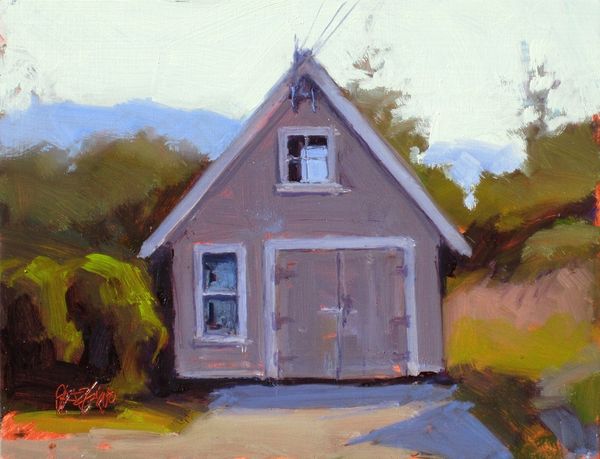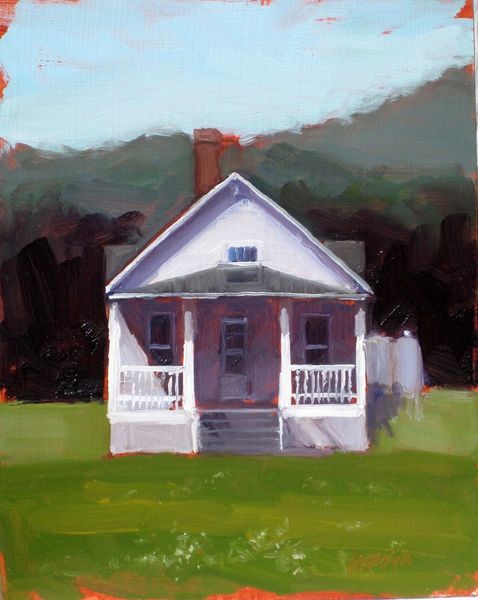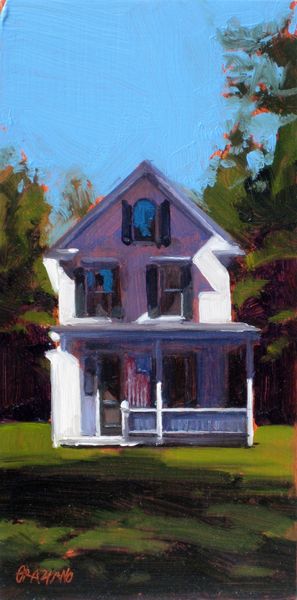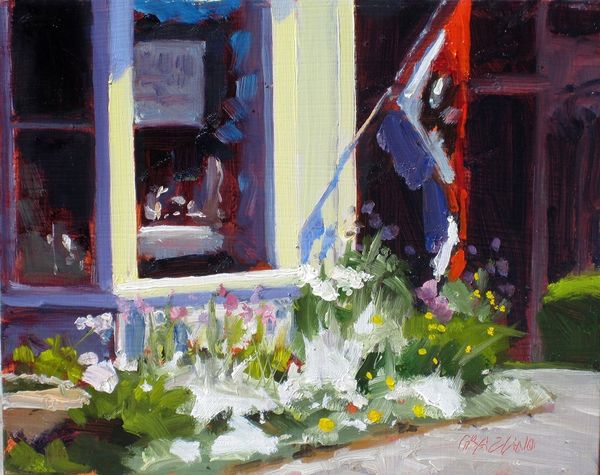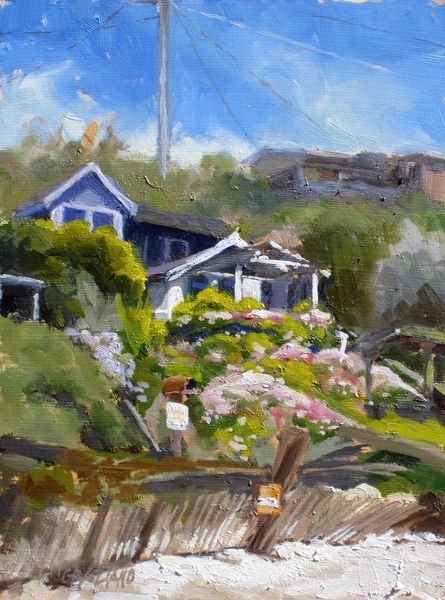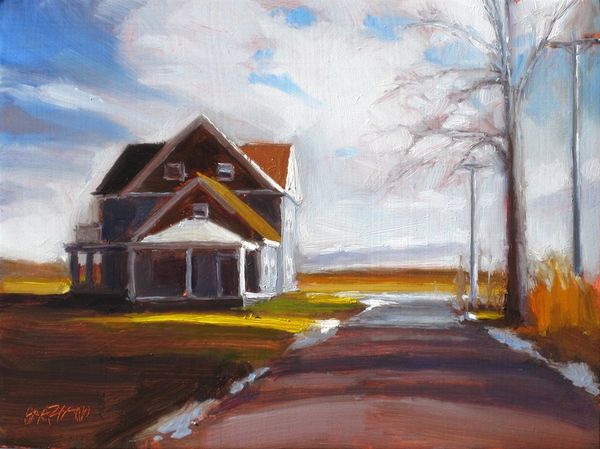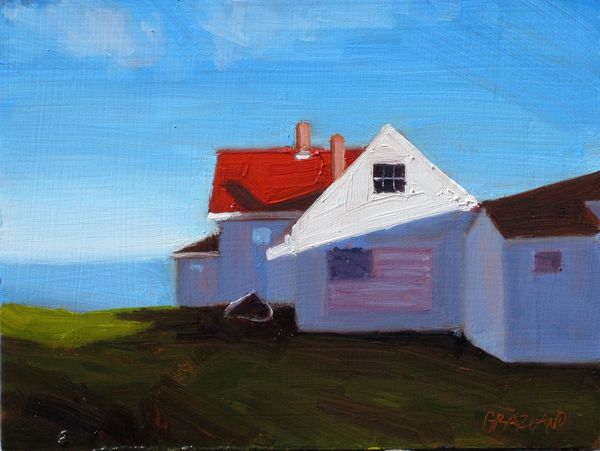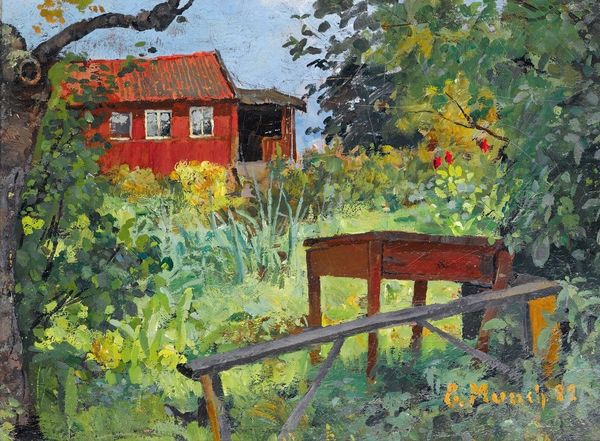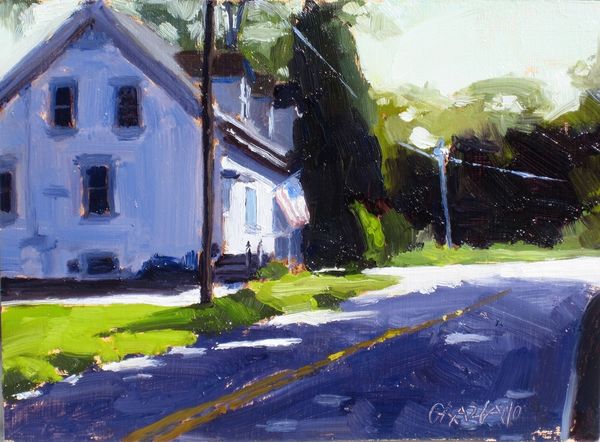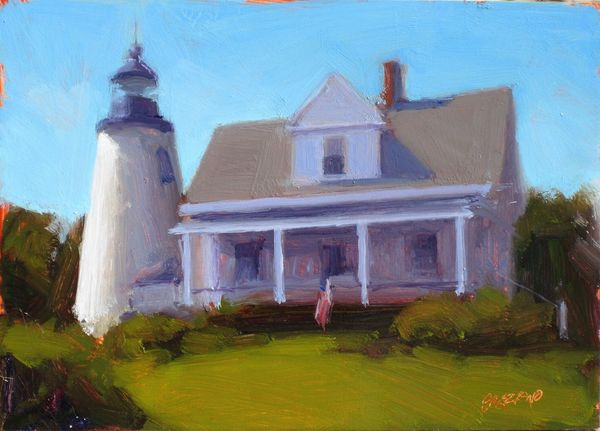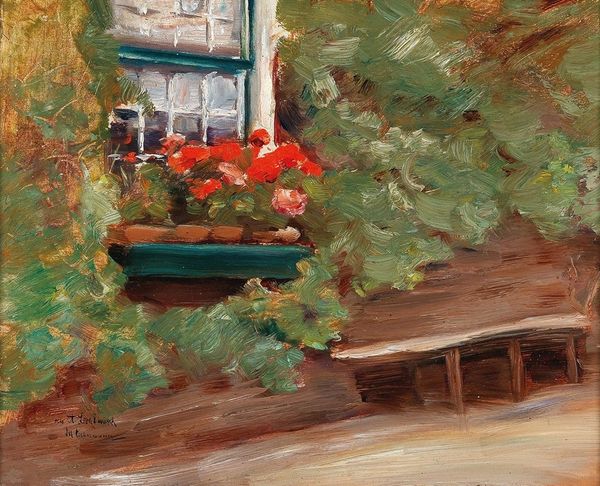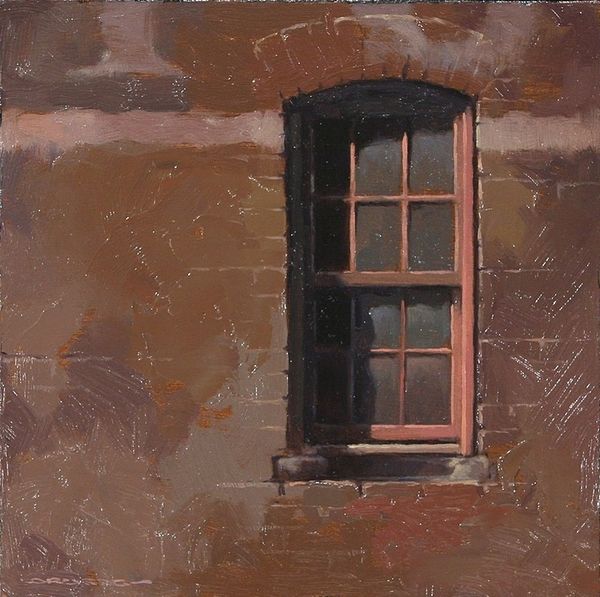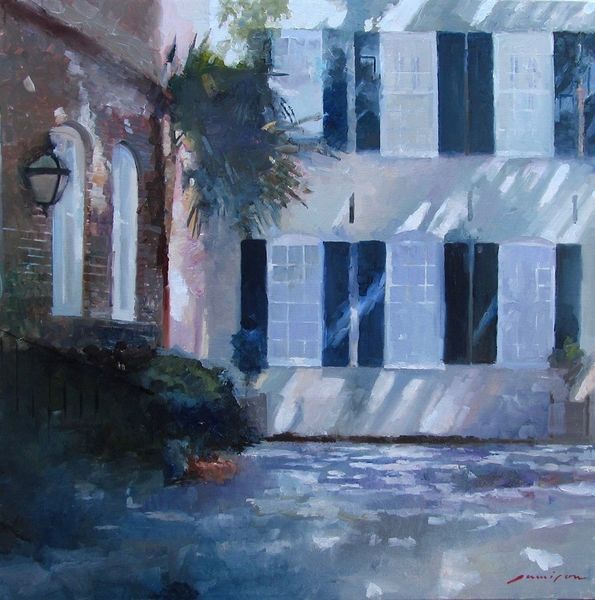
painting, oil-paint, impasto
#
painting
#
oil-paint
#
landscape
#
oil painting
#
impasto
#
genre-painting
Copyright: Modern Artists: Artvee
Editor: Here we have Dan Graziano’s "Bay Window," an oil painting rendered with visible impasto. I'm struck by its casual, everyday feel. What catches your eye? How do you interpret this unassuming, comfortable moment captured? Curator: Considering it through a historical lens, I find this work quite compelling. The choice of a bay window – a common architectural feature, particularly in burgeoning urban and suburban contexts – immediately frames a socio-economic narrative. What purpose do these windows serve, historically and today? They offer enhanced visibility, perhaps alluding to both increased surveillance and aspirational displays of domestic life. What kind of narrative do you see within its muted tones? Editor: So you're suggesting the architecture itself carries social weight? It seems very personal. I’d not thought of that element of display so much. Is the "display" a challenge to more traditional and formal landscapes? Curator: Precisely! Genre painting often served to legitimize the quotidian experience within the accepted hierarchy of artistic subjects. A simple bay window elevates the "everyday" into something worthy of contemplation. Doesn’t the artist encourage a focus on, and perhaps even a romanticization of, middle-class aspirations and aesthetic sensibilities? The small flowers on the window add something as well. Does this small burst of organic growth represent access to privilege and resources? Editor: That is quite profound, placing the window in this type of framework. It seems that in focusing on the ordinary the artist encourages a recognition of it, or a certain value of the overlooked. Curator: I concur, and think its value resides not just in representing daily life, but subtly commenting on societal structures through seemingly simple and often overlooked components of living. We must be willing to read it against those historical elements of class and aspiration. Editor: I now see it has been re-framed completely; what I initially read as merely representational now seems a very politically charged domestic moment. Curator: Exactly, context reframes perception, and the sociopolitical elements are so subtle here.
Comments
No comments
Be the first to comment and join the conversation on the ultimate creative platform.
